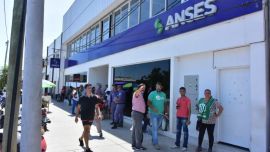La Boca, one of Buenos Aires' most iconic neighbourhoods, lies desolate due after almost four months of quarantine in the capital.
Pre-pandemic times, men and women could be seen dancing tango on the cobbled streets of the vibrant barrio, alive with live music and brightly coloured murals.
But now, “everything related to tourism has died,” laments Lucas Gauna, 40, who works at a cafê and bakery on one of the neighbourhood's main streets.
“The impact has been 300 percent negative. This cafê used to fill up with people. Now we barely sell a basket of bread, and during closing, people come and ask for free bread,” he says.
Blue and yellow
No tourist arriving in Buenos Aires wants to miss the picturesque little barrio on the edge of the Riachuelo river. Nor can they pass up the opportunity to take a photo on El Caminito, the street flanked by colourful tin houses which were once shared by several families at once.
Blue and yellow, the colours of the beloved Boca Juniors football team, dominates the area. La Bombonera, the team’s famous stadium, thrives with activity on match days.
However, during quarantine, the art galleries, restaurants and shops were all shuttered. People instead line up in long lines at the various soup kitchens that have been set up in La Boca.
For Adrián Errea, 54, owner of two souvenir shops, the situation is catastrophic.
“There’s no business, but at the same time you have to pay your expenses,” he explains.
A few restaurants offer delivery, but the majority of residents in the barrio cannot afford the prices that were originally set for tourists.
“We are trying to cope so we don’t have to close,” says Anaí Imán, a waitress at La Vieja Rotisería, one of the district's most iconic restaurants.
The phenomenon is not limited to La Boca – Argentina has been in a recession since 2018, and many businesses that were holding on by a thread have closed for good during the pandemic. The economy is expected to suffer even more this year, with an estimated contraction of 9.9 percent on the way, according to the IMF. Private estimates say it will be even harsher.
Influence
Each corner of La Boca reflects the influence of Genovese Italian immigrants, who settled there during a wave of migration during the second half of the 19th century.
Representations of the country’s most famous figures stand out on the balconies of local shops. Figures like Carlos Gardel, Diego Maradona, and Eva Perón.
For many residents though, the worst part of quarantine is being left without football.
“It’s death. For us, Football is Boca and Boca is everything; it’s what gives us joy, it’s what distracts us from the rest of the world,” explains Gauna.
Guillermo Alio, like most of the artists in the neighbourhood, pays tribute to painter Benito Quinquela Martín (1980-1977), who tinted the area with vibrant colours.
Just months ago, Alio painted watercolours and danced tango in front of his small café.
“I miss the hug that is now prohibited,” he muses.
Edigson Agudelo (known as 'Shogun') moved to La Boca from Colombia three years ago after falling in love with El Caminito. For him, the worst part of the pandemic is the desolation of the famous avenue.
“Never before in the history of this country has it closed,” he said wistfully.
by Maria Lorente / AFP



















Comments